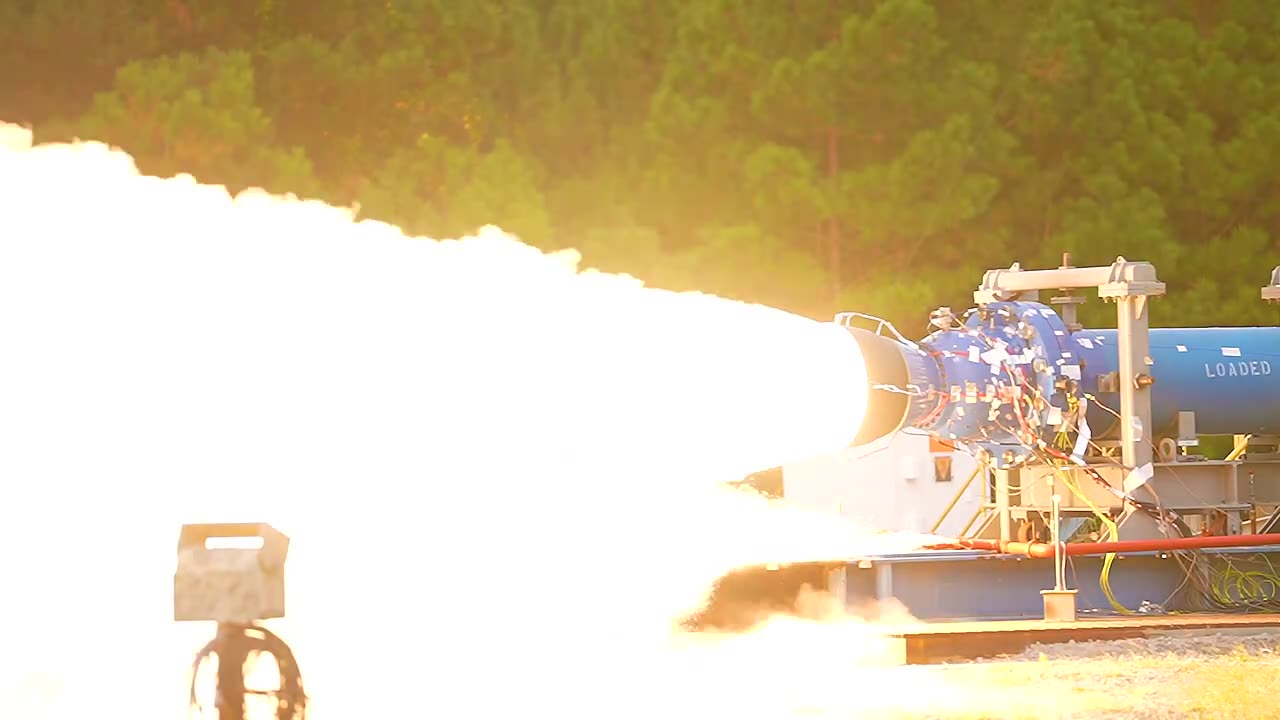Premium Only Content

Subscale Booster Motor Testing for Future SLS Flights Heats Up at Marshall-4K-NASA OFFICAL
Engineers at NASA’s Marshall Space Flight Center in Huntsville, Alabama, conducted a hot fire of a 24-inch subscale solid rocket motor Sept. 14. The test, conducted in Marshall’s East Test Area, produced more than 82,000 pounds of thrust and was part of an ongoing series of developmental tests for an upgraded booster design for future configurations of NASA’s SLS (Space Launch System) rocket.
Beginning with Artemis IX, the SLS rocket in its Block 2 configuration will use the BOLE (booster obsolescence and life extension) booster. The more powerful solid rocket motor will give the SLS rocket the capability to send even heavier payloads to the Moon and other areas of deep space for future Artemis missions.
The test was the third in the series to evaluate the alternate materials for possible use in the nozzle and motor insulation and built upon prior tests at Marshall in 2022 and 2021. The subscale motor tests are an essential part of learning how a full-scale BOLE booster will perform during flight.
For this latest test, NASA and lead booster contractor Northrop Grumman used different materials for both the nozzle and the insulation with the intent of improving the erosion resistance of the components. Engineers will use the data from the test to analyze how the nozzle and insulation performed and compare it to results from the second test.
The SLS solid rocket boosters are the largest, most powerful boosters ever built for spaceflight. They produce more than 75% of total thrust for the first two minutes of flight.
-
 LIVE
LIVE
Russell Brand
1 hour agoRFK Jr. Challenges the System While Starmer’s UK Falls Apart – SF529
6,478 watching -
 LIVE
LIVE
Right Side Broadcasting Network
19 hours agoLIVE: Kash Patel Testifies at Senate Confirmation Hearing for FBI Director - 1/30/25
27,645 watching -
 LIVE
LIVE
Bannons War Room
10 hours agoDirector of Nat'l Intelligence Nominee Tulsi Gabbard Testifies at Confirmation Hearing
10,115 watching -
 LIVE
LIVE
The Charlie Kirk Show
46 minutes agoThe Biggest Confirmation Day Of All + DC Crash Aftermath | 1.30.2025
6,543 watching -
 LIVE
LIVE
vivafrei
4 hours agoKash Patel Confirmation Hearing LIVE with Moderate Viva Frei Commentary!
7,012 watching -
 1:01:58
1:01:58
The Rubin Report
2 hours agoCongress Sits in Stunned Silence After RFK Jr.’s Brutal Fact-Based Wake-Up Call
37.5K18 -
 1:09:51
1:09:51
The Dan Bongino Show
3 hours agoTragedy on the Potomac (Ep. 2412) - 01/30/2025
403K543 -
 2:15:23
2:15:23
Steven Crowder
3 hours agoDonald Unleashed: How Trump is Putting the Fear of God into Illegals and LGBT Radicals
290K97 -
 LIVE
LIVE
LFA TV
16 hours agoNOMINEES ASSEMBLE! | LIVE FROM AMERICA 1.30.25 11AM
4,673 watching -
 LIVE
LIVE
Bannons War Room
10 hours agoFBI Director Nominee Kash Patel Testifies at Confirmation Hearing
7,562 watching